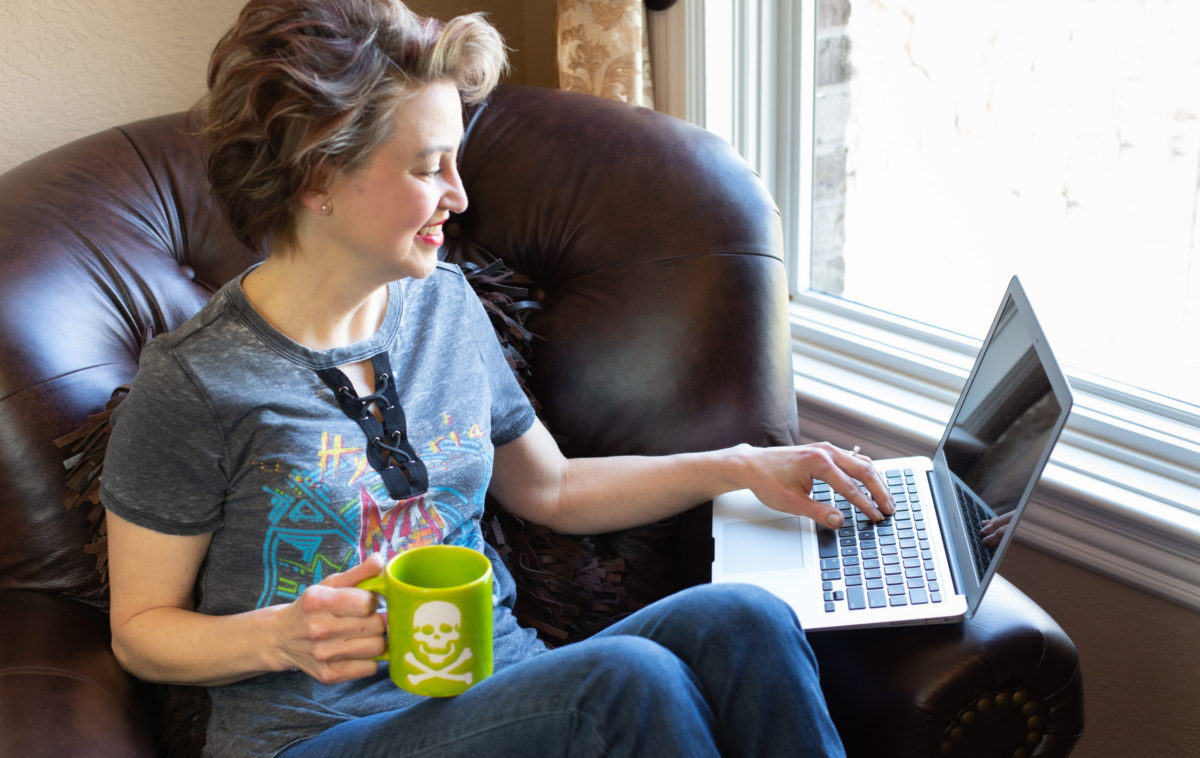
I mentioned last week my mom is retired. If you’re envisioning a little old lady sitting in a rocking chair and knitting, you haven’t met my mom. If she’s sitting in a rocking chair, It’s more likely she’s on her laptop in her home office, videoconferencing with a mentee in Turkey rather than knitting. Instead of trying to balance work and life, Mom has integrated them. She’s incorporated elements she loves (The Bible, studying) into her daily routine (counseling, mentoring).
If you have a job that can’t be done remotely, (e.g. factory, hospital) you have a better shot at work life balance because you leave your work at the place you perform it. But those jobs tend to have hours that don’t coincide with the school day. Balance then becomes: Are you going to your eight-year-old’s piano recital on Saturday or are you working your normal shift as a hair stylist? If you have more of a sales role (talent acquisition, productivity consultant) or knowledge worker (software developer, career coach) you have more freedom to integrate all of your responsibilities. For example, instead of working eight hours straight, work-life integration could look like this: you do deep work at 5:00AM while everyone is asleep. You break at 7:00AM for breakfast with the family. You work while the kids are in school. You answer emails after everyone goes to bed. Integration blurs the lines between home and work. Life becomes more fluid and less categorized. For example, developing a marketing proposal for a client and developing a vacation proposal for the family are both duties you may have, and you get paid to do one of them.
When I think of balance, I visualize the Scales of Justice and constantly trying to keep both sides even. But you don’t have work on one side of the scale and everything else on the other. Life is more like a large Marion’s Super Cheese Pizza whose squares are unevenly cut. Some are huge and some are tiny. Your squares include work, family, friends, health, personal development, spirituality, volunteering, leisure, etc. Some days, those bigger squares are going to be children (e.g., you have to attend parent-teacher conferences). Some days those big squares are going to be work (e.g., attending the all-company videoconference). After you eat a couple of big squares, you fill up on smaller ones: checking email while awaiting your turn at the parent-teacher conferences, light weight lifting while attending the all-company videoconference. (I recommend both video and microphone muted for this one.) Only you can decide which squares and how many to eat everyday. Make decisions based on your values, goals, and priorities. When you feel overwhelmed, write down where your T.E.A.M. is going (i.e., how many squares you’re eating). If you discover you’re spending your T.E.A.M. out of sync with your values, goals, and priorities, consider reassigning the squares. Maybe today the biggest square is the slide deck that’s due at noon and the smaller square is the social media post you told your church you’d do for them this week. You can even share your pizza, giving a square (like the social media post) to someone else.
Switching your mindset to integration can help you achieve the balance you want. How have you changed your routine to bring more harmony to your life? Please share in the comments.









